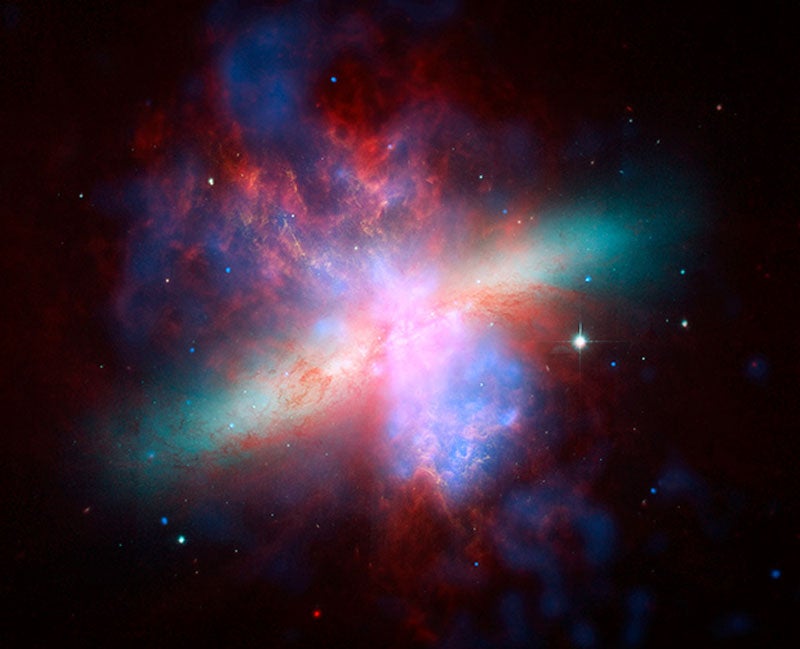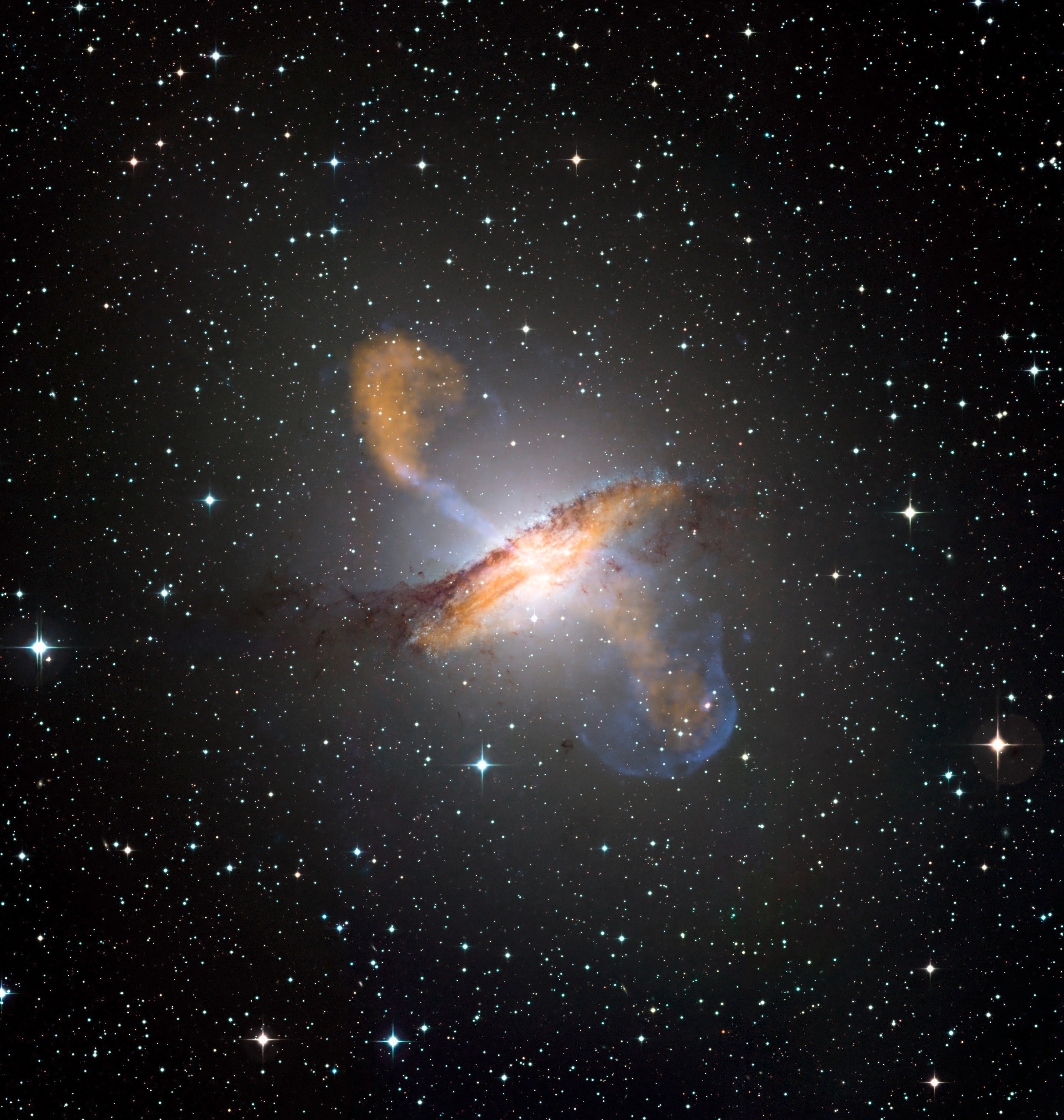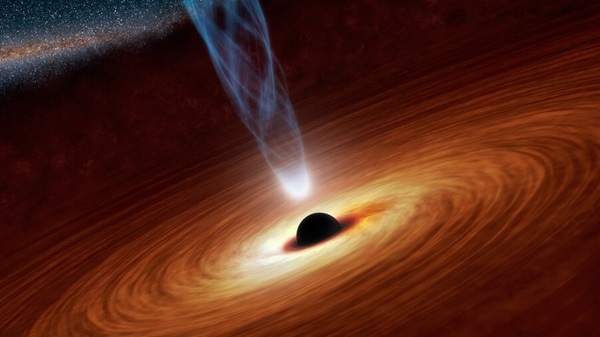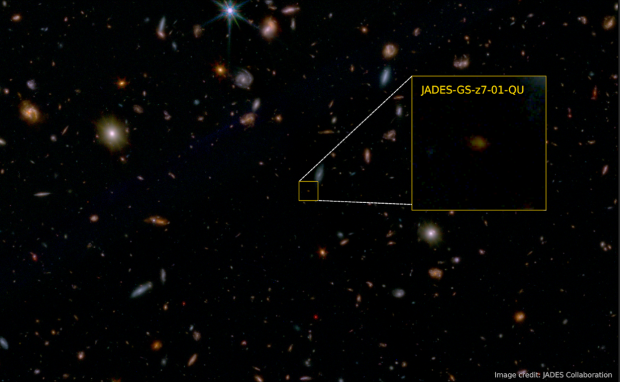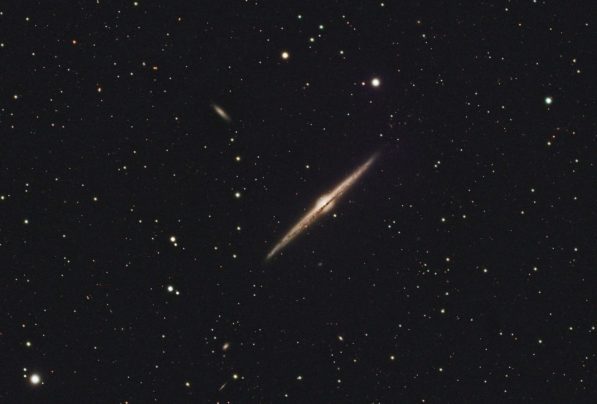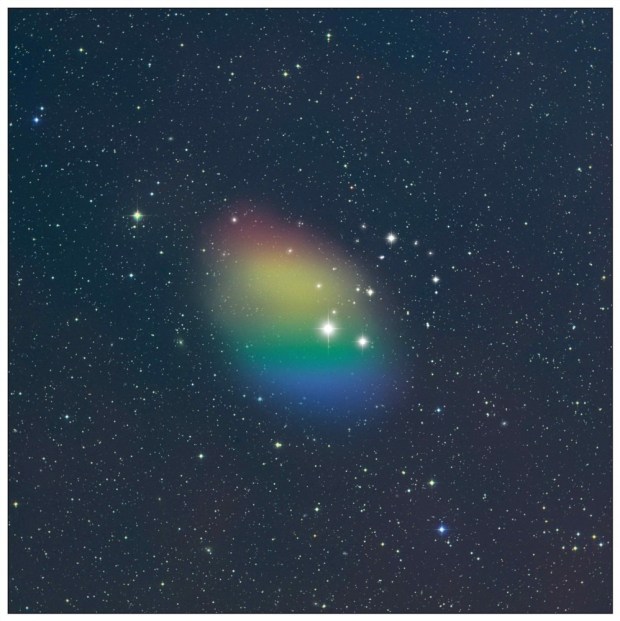M82, which is located approximately 12 million light-years away in the constellation Ursa Major, is a classic example of a starburst galaxy — one that is producing new stars tens to hundreds of times faster than our Milky Way. Its relatively nearby location made it an ideal target for the GBT’s newly equipped “W-Band” receiver, which is capable of detecting the millimeter wavelength light that is emitted by molecular gas. This new capability makes the GBT the world’s largest single-dish, millimeter-wave telescope.
“With this new vision, we were able to look at M82 to explore how the distribution of molecular gas in the galaxy corresponded to areas of intense star formation,” said Amanda Kepley from the National Radio Astronomy Observatory (NRAO) in Green Bank, West Virginia. “Having this new capability may help us understand why stars form where they do.”
Astronomers recognize that dense molecular gas goes hand-in-hand with areas of star formation, but the connection is poorly understood, and this relationship may be different in different types of galaxies. By creating wide-angle maps of the gas in galaxies, astronomers hope to better understand this complex interplay.
To date, however, these kinds of observations have not been easy since molecules that are used to map the distribution of dense gas, like hydrogen cyanide (HCN) and formylium (HCO+), shine feebly in millimeter light. With its new W-Band receiver, the GBT was able to make highly sensitive wide-angle images of these gases in and around M82.
“The GBT data clearly show billowing concentrations of dense molecular gas huddled around areas that are undergoing bursts of intense star formation,” said Kepley. “They also reveal giant outflows of ionized gas fleeing the disk of the galaxy. These outflows are driven by star formation deep within the galaxy.”
This capability will enable astronomers to quickly survey entire galaxies and different parts within galaxies. Such surveys would complement higher resolution observations with the new Atacama Large Millimeter/submillimeter Array (ALMA) telescope in Chile.

